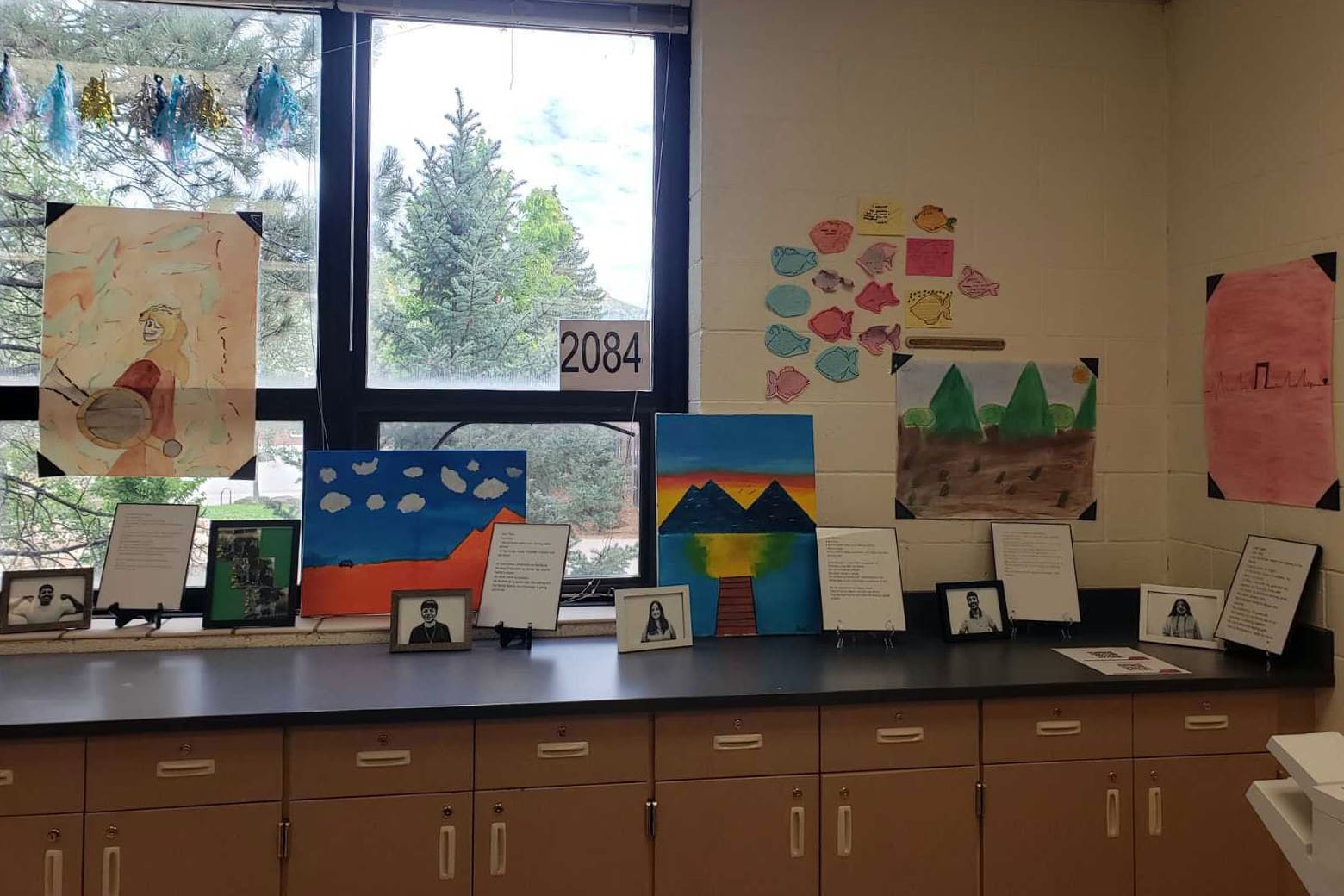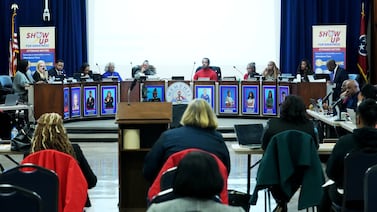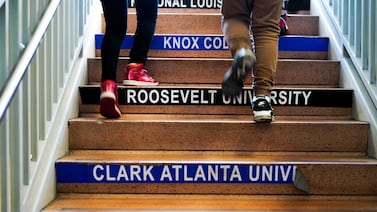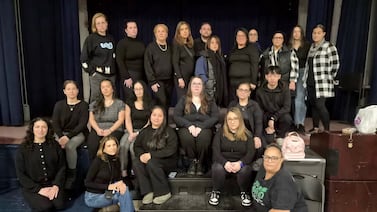Sandra Hernandez knows what a struggle it can be for students to learn English while in high school.
She’s been raising four multilingual children, including a 17-year-old niece who just returned from Mexico to live with her in Durango in southwest Colorado.
So every time Hernandez was asked to fill out a survey from school, she suggested the same thing: more support for students learning English.
Finally, after hearing many similar requests, a family liaison at Durango High School pitched the idea to host a summer program focused on helping newly arrived migrant students who need more practice with their English before the school year begins.
This summer, the Durango district enrolled about 10 students in the program for four weeks before the school year started, including Hernandez’s niece, Abril Esmeralda.
Hernandez praised the program, and her district for listening to her request.
“I can already see how she’s developing,” Hernandez said of her niece.
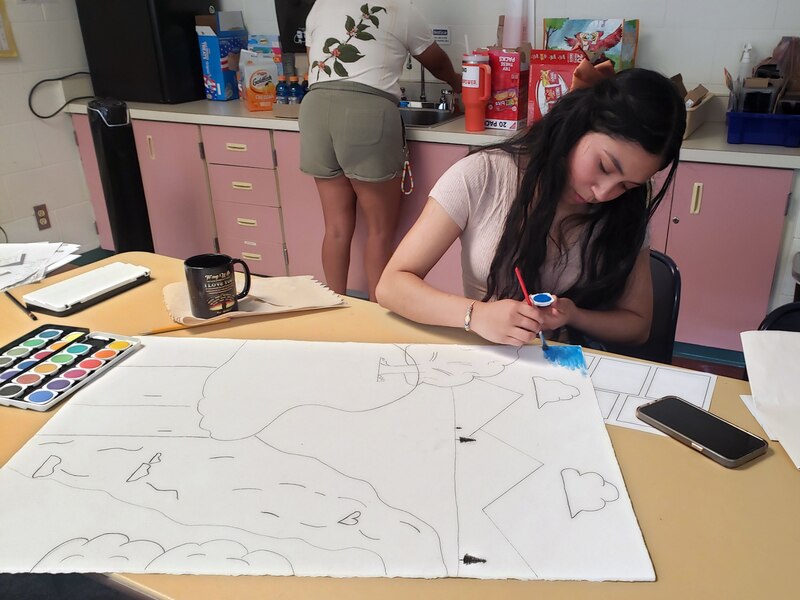
Such programs fill a critical need for families and educators across the state. Colorado districts enrolled thousands of newly arrived immigrant students throughout the last school year. Teachers in places like Denver, Aurora, and Jeffco have described feeling overwhelmed at times by the arrival of so many new students, and the experience has prompted changes across schools.
The same has happened in rural Durango, a district of about 5,200 students where about 4% of students identify as English learners. The district received 36 new-to-English students last school year, compared with six in 2021.
Last year, the district welcomed new-to-the-country families enrolling for school with a printed guide containing information about school start times, supply lists, and free lunches, plus pictures of all the key people to know and how to get in contact with them.
But this year’s summer program was the big hit with families and students who participated.
The program went beyond practicing English. Students also worked on art projects about what it means to be home. The idea came from a former Colorado Teacher of the Year, who’s been sharing it for years as a way to get students and their communities to connect.
The students’ projects were presented to families first, then to teachers who were able to use the works to get to know the students they might encounter in their classes. Next week, the projects will be on display at the community library.
Leaders say the work has already helped students feel like they belong.
Kira Cunningham, the Durango district’s newcomer specialist, said she watched students from the summer program walking into their first day of the school year last month. One student, who had arrived in the U.S. just before the last school year ended, caught her attention.
“He was strutting into the building, fist-bumping all the staff members out front,” Cunningham said. “It was just such a delight to see. The confidence was just kind of coming out of their pores.”
The district spent just $3,219 on the program. The goal was to help students practice their English skills in a comfortable environment before the start of the school year, giving them confidence to participate more during the school year.
“Truly, I feel that because of the classes, I have a lot more confidence to be able to explain things,” said 17-year-old Brandon Chame, one of the participants. “I’m less afraid of making a mistake.”
Conquering fear was the idea behind the art project, said Leticia Guzman Ingram, the 2016 Colorado Teacher of the Year, an educator in the Roaring Fork School District, and now also a professor at Colorado Mountain College.
Guzman Ingram said she first thought of the idea of an art project about home when she saw fear between her newcomer students and local community members. Students told her they were afraid that one of her white male friends they encountered was going to call immigration on them. The man told her he was afraid the students were troublemakers.
“Everybody is afraid of each other,” Guzman Ingram said. “But then you realize you’re so much more alike than you think. It doesn’t matter what color skin you have. Mothers all want their kids to be happy and to succeed. Sometimes we forget.”
She thought of an art project, she said, because “art’s easy. It’s something everyone can share.”
The project also incorporates writing. In Durango, students wrote a narrative about their project and themselves. Then they practice speaking English when they get to present it to others.
After doing the project in various ways with different classes of students, Guzman Ingram said she sees how art and having students speak about their life experiences can inspire educators, give students confidence, and change the community’s perspectives.
She also likes to take newcomer students on field trips to put their new English skills to use asking for directions at the airport, or for help at the grocery store. She gets the workers at those places involved ahead of time, so they know that they’re helping her students who want to be fluent in English, and it breaks the fear, she said.
“I’ve seen it as a teacher that when these students feel safe and they feel like their voice is heard, they try harder and work harder,” Guzman Ingram said. “When they feel accepted they flourish. That happens with all of us.”
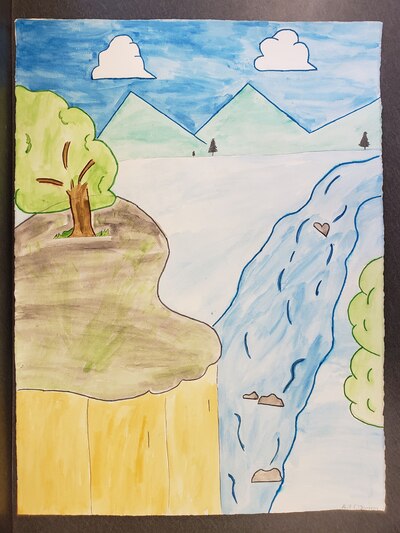
For her project, Hernandez’s niece, Abril, drew a river because home made her think of peaceful surroundings.
For Brandon, who was also born in Durango but raised in Mexico, home reminded him of a warrior — a representation of the historical Mexican culture he liked to learn about in his former home. It’s something he carries with him wherever he goes.
Brandon has been back in Durango with his parents for just over a year now. He’s attending school, and working at a local hotel kitchen. He loves his job, and the fact that the money he earns doesn’t feel as crucial to his family’s survival as it did when he was in Mexico.
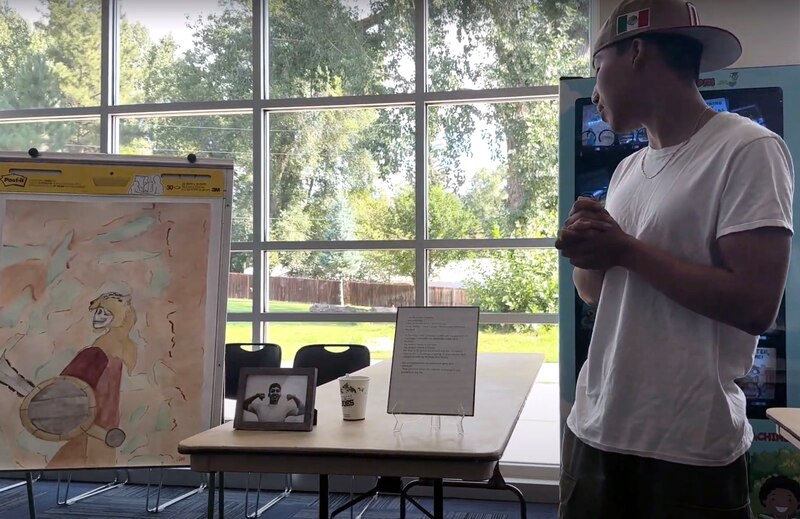
In Mexico, he had to give up school recently to work full time. It’s part of what drove his family to decide they needed to come back to the U.S. Now he’s able to work and study. And he’s thinking ahead to college, and a possible career in culinary arts or criminology.
At his high school in Durango, he said he’s encountered supportive teachers, so when Cunningham asked if Brandon would help present the art projects to teachers, he was nervous, but he agreed.
Now Brandon brags about how he was able to present, mostly in English and unscripted — speaking mostly from his heart, he said.
He hopes other immigrant students get to experience programs like Durango’s. And he has been able to offer advice to teachers encountering more immigrant students.
“I told them the majority of Latino students who arrive here tend to be nervous about speaking,” Brandon said. “We know we’re not very familiar with the language, like to be able to explain things fully. It’s not that we don’t want to participate, it’s that embarrassment, and nerves stop us. Just get close to them and ask them questions. Little by little, it gets better.”
Yesenia Robles is a reporter for Chalkbeat Colorado covering K-12 school districts and multilingual education. Contact Yesenia at yrobles@chalkbeat.org.

